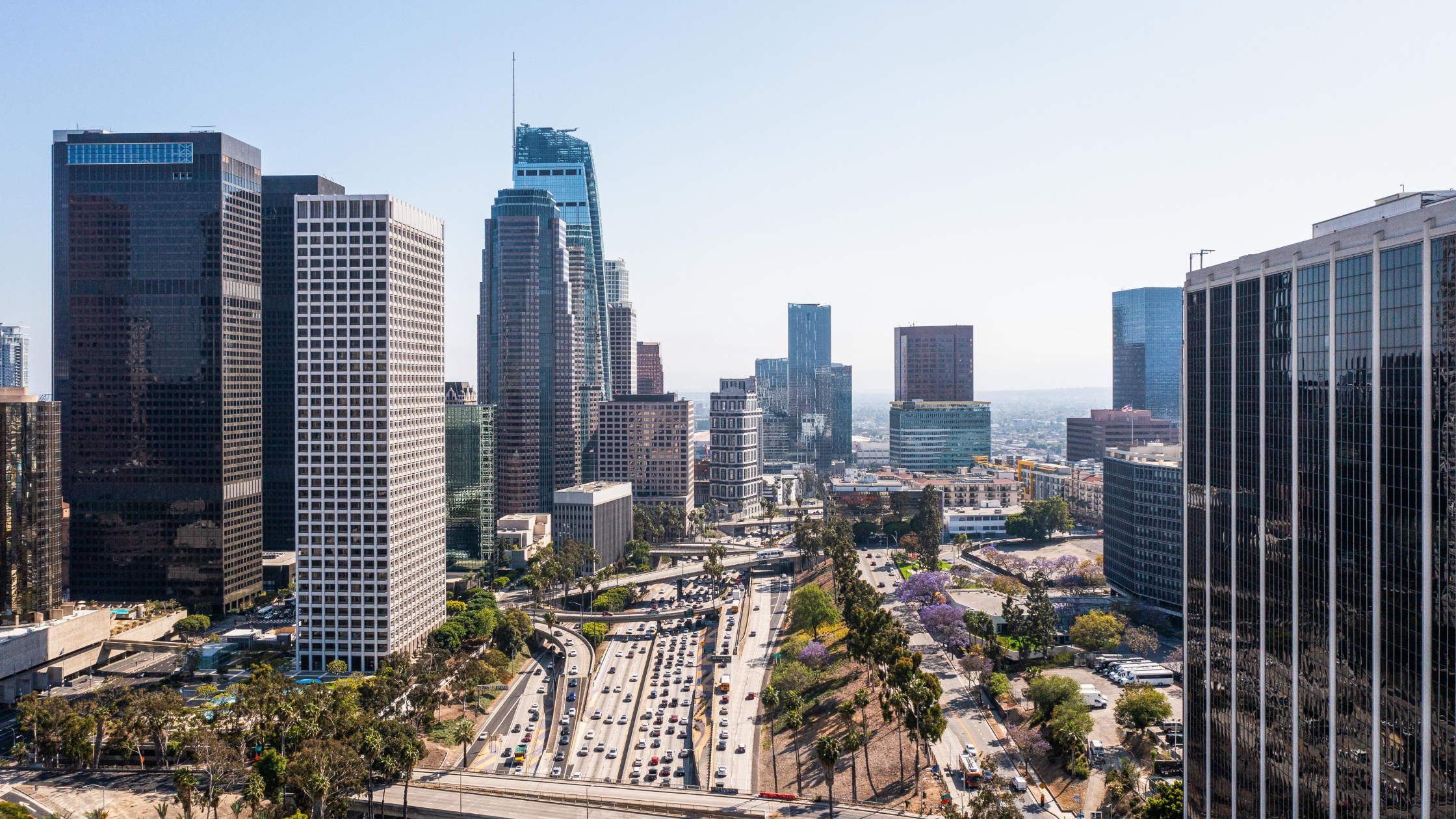Introduction
While broader economic conditions remain uncertain in Q2 2025 — with rising interest rates and tighter lending environments — the Dallas-Fort Worth CRE market continues to outperform many peer metros.
Population growth combined with a wave of corporate relocations and ongoing development projects are keeping the market active and attractive.
This update examines the forces shaping the region’s commercial property landscape this quarter. We’ll look at what’s moving the market and where the most promising opportunities are emerging.
Macroeconomic factors driving the DFW CRE market
Dallas-Fort Worth added nearly 178,000 new residents over the past year, pushing the total population past 8.3 million.
Collin County alone grew faster than any other county in Texas, expanding 132% since 2000 and welcoming about 128 new residents each day.
These population gains are fueling sustained demand across multifamily and retail, as well as mixed-use development to some extent.
Corporate investment continues to flow in
Texas earned the Governor’s Cup again in 2024, with 1,368 major investment projects — that’s more than double the number in Illinois (which earned second place).
DFW contributed 489 of those projects to make up 36% of the total and reinforce its role as the state’s economic driver.
Relocation activity remains strong with major companies like KFC US moving their headquarters from Louisville to Plano.
These moves indicate that businesses are choosing the DFW metro to access talent and reduce costs, as well as to benefit from a more agile regulatory environment.
Sector-Wise Trends in Q2 2025
Office space
Key office metrics according to CoStar:
Despite forecasts that hybrid work would permanently weaken demand, DFW’s Q1 leasing activity hit 3.5 million square feet — the strongest first-quarter performance since before the pandemic. That total also exceeds last year’s Q1 figure by 1.1 million square feet.
Collin County continues to attract new office tenants thanks to its modern inventory and highly skilled workforce.
Businesses are leaning toward high-quality Class A space as return-to-office policies become more common — so much so that the segment made up about 70% of recent leasing activity.
Rent growth has slowed to 1.8%, but DFW’s performance still outpaces the national average and other large Texas cities when viewed over the last four years.
Office space in the metro remains competitively priced at $32 per square foot (below the national average of $36).
Top-tier submarkets like Uptown and Turtle Creek command rates as high as $80 per square foot while more localized businesses still find value in the $30 range.
Industrial and logistics
Key industrial metrics according to CoStar:
The industrial sector in DFW has reached a more balanced state in early 2025.
New supply and tenant demand have aligned to hold vacancy steady.
Rent growth has cooled from its 10.9% peak in 2022 to a current 4.5%, but it remains healthy by national standards.
Data center developers are aggressively pursuing sites with existing power infrastructure, pushing demand for these parcels to new highs.
Sites with existing energy access have become highly prized as AI technologies place new demands on power and infrastructure.
In Texas, developers face hurdles securing power from providers like Oncor, which received 59 GW of new service requests in just one quarter.
With only 10 to 15 parcels in the region currently meeting infrastructure requirements, property owners with pre-existing power capacity have gained a clear pricing advantage — turning previously undervalued land into premium industrial assets.
Retail
Key retail metrics according to CoStar:
Retail in Dallas-Fort Worth continues to outperform and lead all US markets with 2.4 million square feet of positive net absorption over the past year.
The region’s pipeline remains active but controlled. Roughly 70% of the upcoming inventory has been pre-leased, which helps prevent oversupply.
The expansion of H-E-B’s Joe V’s Smart Shop is particularly interesting. The concept opened its second store on March 26 in East Dallas and will launch a third in Irving later this year.
These stores — which are about half the size of a traditional H-E-B — deliver groceries at 10% to 20% lower prices by skipping distribution centers and shipping directly to stores.
They also focus on areas that lack fresh food access, meeting a local need while extending H-E-B’s brand footprint in North Texas.
Multifamily
Key multifamily metrics according to CoStar:
DFW’s multifamily market is starting to regain balance after a year of supply-driven pressure.
Developers have expanded beyond the core into counties like Ellis, Kaufman, and Rockwall — areas that benefit from population shifts tied to affordability and nearby industrial growth.
About half of all communities now offer concessions (typically six to eight weeks of free rent).
Even so, demand remains strong: Q1 2025 saw 7,400 units absorbed — marking the best first-quarter absorption since early 2021.
For the first time in several years, the market recorded a modest drop in vacancy (down 10 basis points), giving landlords and developers a reason for cautious optimism heading into the busier spring and summer leasing seasons.
Investment Outlook for H2 2025
Industrial development continues to expand
The DFW industrial market added more than 30 million square feet of industrial space in 2024 alone, and another 25 million square feet is now under construction — much of it pre-leased or targeting high-demand sectors like logistics, e-commerce, and manufacturing.
Several submarkets are leading this expansion:
- AllianceTexas: This 27,000-acre logistics hub continues to attract large-scale industrial users thanks to its infrastructure and strategic location.
- South Dallas/I-45 Corridor: With affordable land and direct highway access, this corridor has become a hotspot for warehouse and distribution activity.
- DFW Airport submarket: Industrial tenants value the proximity to cargo infrastructure, with new leases being signed by firms needing rapid shipping and distribution capabilities.
DFW’s available land and energy infrastructure position it well for continued momentum in the second half of 2025 as industrial space tightens in other regions.
Multifamily growth remains concentrated in key submarkets
Dallas has led the country in new multifamily deliveries over the last decade, with nearly 201,000 units completed between 2014 and 2024.
While Houston and Austin followed with 164,100 and 126,100 units respectively, Dallas saw a 38.3% inventory increase over that period.
But the more dramatic growth has taken place in specific suburbs — especially north and east of the urban core. These areas have responded to both population growth and rising demand for affordable housing near employment centers.
- Frisco: Apartment inventory in Frisco jumped 238.3% in 10 years (that’s over 26,600 units added). This is the third-largest increase nationwide, behind only Brooklyn and Jersey City. Frisco straddles Collin and Denton Counties where populations grew by 11.1% and 10.2% respectively between 2020 and 2023.
- Rockwall/Rowlett/Wylie: Ranking second nationally for percentage growth, this submarket saw inventory rise by 234% — that’s roughly 8,800 units added. Located northeast of Dallas around Lake Ray Hubbard, this area has drawn new residents thanks to its suburban feel and higher household incomes. Rockwall County’s population rose by 20.3% between 2020 and 2023.
- Kaufman County: South of Rockwall, Kaufman County added 3,716 new apartment units, growing inventory by 143.9% over the past decade. Kaufman was the fastest-growing county in the US between 2020 and 2023, with a population increase of 26.2%.
Financing trends in the DFW CRE market
Rising interest rates and tighter underwriting standards have made traditional bank loans more difficult to secure especially for transitional or value-add projects. Some investors are also turning to creative deal structures to close capital gaps without losing control of the project or delaying execution.
Conclusion
Dallas-Fort Worth continues to outperform national trends across multiple commercial real estate sectors.
Market research and strategic financing will be critical heading into the second half of 2025.
The right location still matters—but now, how a deal is structured and financed can make or break the outcome.
Our team here at Private Capital Investors is here to help CRE buyers who are looking to stay ahead.
Being based in Dallas, we know this market inside and out. Our team includes seasoned private commercial real estate lenders with deep knowledge of regional trends and capital dynamics.
We fund an average of $500 million annually — and we do it by tailoring financing solutions to fit the exact needs of each client. Our track record speaks for itself: consistent performance built on insight, precision, and execution.
Contact us using this form or call (972)-865-6206 to discuss your next DFW project.
Sources
- Provided https://www.mdregroup.com/dallas-fort-worth-commercial-real-estate-market-update-q2-2025-trends-investment-forecast/
- Surge in industrial https://vidtech.com/blog/the-rise-of-industrial-development-in-dallas-fort-worth-a-cre-powerhouse/
- Submarkets to watch https://www.realpage.com/analytics/texas-submarkets-inventory-growth-2024





